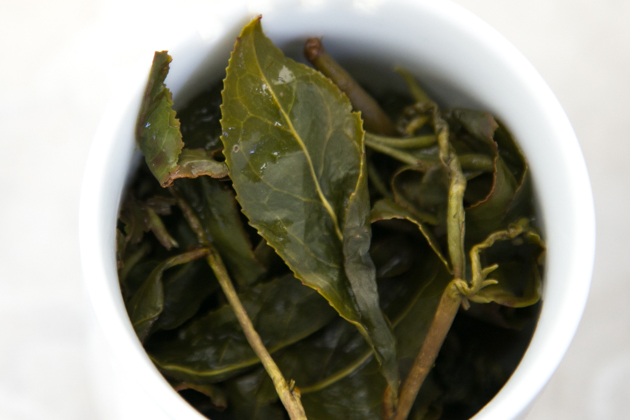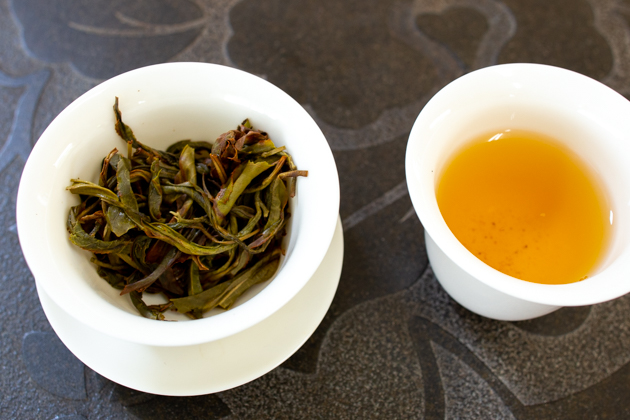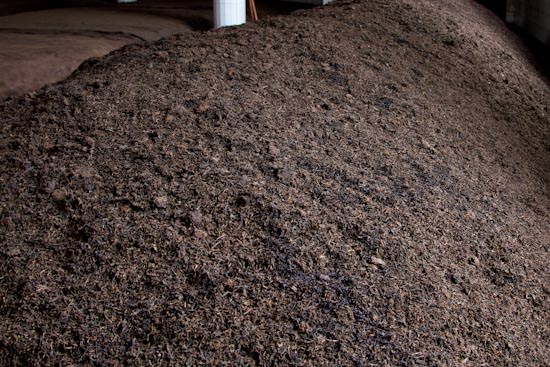- HOME >
- Tea Column
The Difference Between Fermentation in Tea and Fermented Foods
- [2024.02.12] Posted By Akira Hojo

Black tea and oolong tea are often categorized as “fermented teas,” but the extent to which they undergo fermentation raises questions about whether they truly qualify as fermented foods. In this article, I endeavour to offer a thorough exploration of the distinctions between tea and traditional fermented foods, shedding light on the nuances of their processing methods and biochemical transformations.
Common Fermented Foods
When we talk about fermented foods, we’re referring to foods where microorganisms play a pivotal role in the production process. Representative examples of fermented foods include alcoholic beverages, miso, soy sauce, cheese, natto, yogurt, and more.
During the production of fermented foods, microorganisms consume food components, multiply, and simultaneously transform these components into distinct organic compounds through enzymes derived from microorganisms. Essentially, the term “fermentation” in the context of fermented foods signifies the enzymatic conversion of the food’s components facilitated by enzymes derived from microorganisms.
The Fermentation Process in Tea
Tea is often broadly categorized as a fermented food, but when it comes to teas like black tea and oolong tea, there is no involvement of microorganisms in the “fermentation” process. This sets the fermentation process of tea apart from that of other fermented foods.
In the case of tea fermentation, the polyphenols present in the tea leaves undergo oxidation due to the naturally occurring enzymes, known as oxidative enzymes, in the tea leaves. Initially, these enzymes and polyphenols are stored separately within the cells. However, through the process of rolling or kneading, the cells are damaged, allowing the enzymes and polyphenols to mix and initiate a reaction.
In tea, fermentation primarily involves enzymatic oxidation reactions facilitated by the plant’s own enzymes and components, such as polyphenols. This distinctive process distinguishes tea fermentation from the fermentation processes observed in other fermented foods.


In summary, the fermentation process observed in typical fermented foods involves enzymatic reactions facilitated by microorganisms. However, in the case of tea, fermentation entails a transformation of components through the inherent enzymatic reactions present within the tea itself. While the Chinese character “酵” in fermentation signifies enzymes, and tea indeed utilizes enzymes in its processing, it deviates significantly from what is conventionally considered fermented foods due to the absence of microbial involvement.
Other Foods Utilizing Enzymatic Reactions Similar to Tea
Numerous other types of enzymatic reactions, akin to those observed in tea, can be found in various foods. For instance, the formation of pungent components and the generation of aroma in garlic and onions also follow a similar mechanism. The characteristic smell of plants in the Allium family, such as onions, arises when the cells are disrupted through cutting, facilitating the mixing of enzymes and substrates.
Grating wasabi triggers a enzymatic reaction that results in the formation of spiciness, akin to the fermentation process observed in black tea. Within the cells of wasabi, an enzyme called myrosinase coexists with a component called sinigrin glucoside. When grated, the cells rupture, allowing these two substances to combine and produce the pungent compound allyl isothiocyanate. Interestingly, wasabi itself has a sweet and mildly bitter taste. Similarly, the transformation of green peppercorns into black pepper shares a related process, as does the browning of apples or bananas when cut, all involving enzymatic reactions.
The enzymatic reactions observed in these foods mirror those found in the fermentation process of tea. However, neither plants from the Allium family, such as onions, nor wasabi are categorized as fermented foods. Hence, referring to tea as a fermented food is rather exceptional within the scope of food classification.
Exceptional Tea Made Through Microbial Fermentation


Certain teas, such as Pu-erh and some dark teas, undergo fermentation involving microorganisms, similar to typical fermented foods.
For instance, Pu-erh ripe tea is produced through the fermentation of microorganisms such as bacteria, yeast, and mold. Unlike the traditional oxidation process of tea leaves, the raw material, Pu-erh raw tea, undergoes a heating process during production, which deactivates the enzymes. Consequently, the distinct flavor of ripe tea is primarily created by microorganisms and their enzymes, rather than those derived from the tea leaves themselves.
Related Articles
How to get the latest update on HOJO Tea?
1. Follow Twitter, 2. Click "Like" on Facebook, and 3. Subscribe in newsletter. You can have the latest tea news from HOJO Tea.
 Subscribe the Newsletter to enjoy the privileges
Subscribe the Newsletter to enjoy the privileges- You may receive a free sample upon purchase, or you may have the priority to purchase special products. So please remember to subscribe our newsletter as well as the social network.
- New Release of High Mountain White Tea
- We are pleased to introduce our High Mountain White Tea, sourced from a unique tea garden with two key features: 1. Located at an altitude of 2200-2300m2. Completely wild and untended The ideal natural conditions of this garden result in tea of exceptional quality, offering a pure and gentle, nourishing taste. High Altitude and Wild …
- New Release of Da Xue Shan Wild White Tea 2024
- We have released the 2024 Da Xue Shan Wild White Tea Loose Leaf. This tea was produced under our direct supervision during our stay in Yunnan Province, ensuring meticulous production management on site. Definition of Wild Tea in Yunnan Province People in Yunnan strongly associate Camellia taliensis with wild tea, regardless of where it is …
NEW ARTICLES
 Why Do Some Teas Taste Astringent? Exploring the Causes and Mechanisms of Astringency
Why Do Some Teas Taste Astringent? Exploring the Causes and Mechanisms of Astringency- Tea can range from having no noticeable astringency to possessing a very strong one. What causes this astringency? This article explores the causes and mechanisms behind astringency in tea. Causes of Astringency Astringency arises from the binding of tea components to proteins in the oral cavity, creating a sensation of tightness or dryness. The tongue …
 The Impact of Heat Sources on Tea Flavor
The Impact of Heat Sources on Tea Flavor- It is widely recognized that the material of a kettle plays an important role in shaping the taste of water for brewing tea. Yet, an often overlooked but equally significant factor is the type of heat source used to boil the water. Different heat sources, whether gas, electric, charcoal, or wood fire, can impart distinct …
 New Release of High Mountain White Tea
New Release of High Mountain White Tea- We are pleased to introduce our High Mountain White Tea, sourced from a unique tea garden with two key features: 1. Located at an altitude of 2200-2300m2. Completely wild and untended The ideal natural conditions of this garden result in tea of exceptional quality, offering a pure and gentle, nourishing taste. High Altitude and Wild …
 New Release of Da Xue Shan Wild White Tea 2024
New Release of Da Xue Shan Wild White Tea 2024- We have released the 2024 Da Xue Shan Wild White Tea Loose Leaf. This tea was produced under our direct supervision during our stay in Yunnan Province, ensuring meticulous production management on site. Definition of Wild Tea in Yunnan Province People in Yunnan strongly associate Camellia taliensis with wild tea, regardless of where it is …
 New Release of Wild Pu-erh Jasmine Pearl
New Release of Wild Pu-erh Jasmine Pearl- Out of curiosity, we decided to create a jasmine tea based on Da Xue Shan Wild Raw Tea. This resulted in an exceptionally rare tea, not only in Japan but also in China. Custom Production Network for Jasmine Tea At our store, we source various types of base teas from different regions during the spring. …
 2024 Overview: Our Yunnan White Tea Quality, Process, and Weather Insights
2024 Overview: Our Yunnan White Tea Quality, Process, and Weather Insights- One of the teas we’ve been focusing on in Yunnan Province is white tea. Historically white tea has been produced in both Fujian Province and Yunnan Province for a long time. While white tea from Fujian Province is well-managed during processing, we are dissatisfied with the quality of the raw materials due to the use …
 Yunnan’s Hospitality Culture: Expressed Through Meals
Yunnan’s Hospitality Culture: Expressed Through Meals- In China, as a form of greeting, it’s common to say “你吃饭了吗?” which means “Have you eaten?” However, in Yunnan Province, the phrase “吃饭” is often used in various situations, more like “Eat, eat,” serving as an invitation to share a meal. Yet, with prolonged exposure to Yunnan, one comes to understand that these meal …
 In Search of Wild Tea: Exploring Mountain Villages in Southwest Lincang, Yunnan
In Search of Wild Tea: Exploring Mountain Villages in Southwest Lincang, Yunnan- We are currently sourcing tea in the southwestern part of Lincang City, Yunnan Province. One of the crucial products for us is wild tea. While tea processing is important, securing the raw materials poses the biggest challenge. Recently, we received information about a new location where wild tea supposedly grows. To verify this, we visited …
 New Release of Anxi Traditional Oolong
New Release of Anxi Traditional Oolong- Anxi, located in Fujian province, China, is celebrated for its Tie Guan Yin tea. However, the Traditional Anxi Oolong from this region boasts a unique fruity aroma, distinguishing it from Tie Guan Yin. Anxi: A Renowned Hub for Oolong Tea Production in China Fujian Province, renowned for its rich tea heritage, boasts several prominent tea-producing …
 Yunnan 2024 Spring Tea Sourcing
Yunnan 2024 Spring Tea Sourcing- Yunnan Province is globally renowned for the exceptional quality of its tea leaves. However, lax production management often presents challenges in achieving the desired tea quality when relying solely on pre-made teas. To address this issue, we have committed to remaining on-site throughout the spring season to closely monitor tea production. We are meticulously inspecting …
Shop Info

Address:Lot No. T-215, 3rd Floor, The Gardens Mall, Mid Valley City, Lingkaran Syed Putra, 59200 Kuala Lumpur
Tel: +603-2287-4537
Business Hour: 10am to 10pm
Category
- New Arrival at HOJO Online Shop
- Featured Articles
- Newsletter
- Types of Tea
- Origin of Tea
- Teapot and Tea Equipment
-
Tea Column
- How to enjoy tea
- Tea Processing
- How to choose quality tea
- Tea constituents and functional effect
- Safety of Tea
- Foods
- Tea Business Operation
- Hobby and Outdoor Activity
- Ranking of Tea
- Video
- FAQ
- Media Release
Profile

- AKIRA HOJO
- I invite you to experience my tea selections.I was born in Nagano, Japan. In university, I studied agricultural chemistry, and I have the master degree in food science. I worked in Japanese food industry for 10 years. I involved in R&D, QC and QA. As a factory manager, I implemented ISO9000 series and managed the factory.
- The Art of Tea Magazine
- We posted the article on “The Art of Tea Magazine No.9, the magazine is published in Taiwan. We featured some scientific view about the tetsubin
- New Straits Times
- The Malaysian National Newspaper, New Straits Times featured HOJO Tea on 17-Oct-2007.















